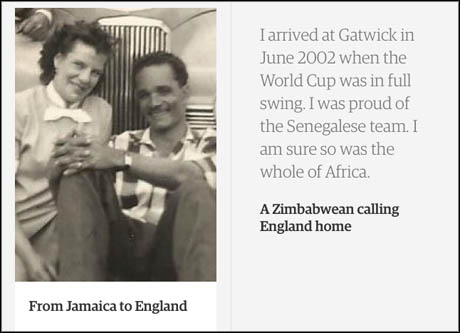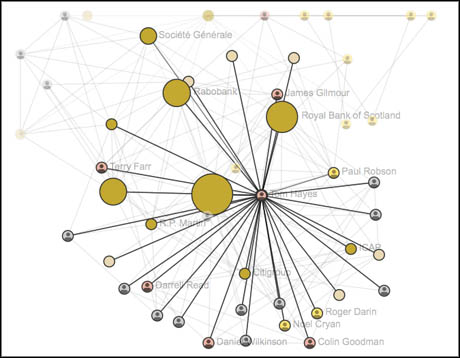Coming from a print journalism background, Aron Pilhofer, the Guardian's executive editor for digital, was always "on the nerd wing" of the newsroom. But such a viewpoint has resulted in him working at the very leading edge of digital storytelling in recent years.
After nearly ten years at the New York Times, Pilhofer joined the Guardian last summer. Speaking at the International Journalism Festival in Perugia yesterday, he and John Crowley, the Wall Street Journal's EMEA digital editor, detailed some of their favourite pieces of digital journalism.
The panel focussed on the "unicorns of the newsroom" – the elusive journalist who knows how to code – giving some key examples of forward steps in digital storytelling and the thinking behind them.
Building templates
Immigration is a "huge issue" in the UK, said Pilhofer, especially as the country gears up to May's general election.
But the "loudest discussants tend to be politicians", he said, "and you rarely hear the voices of immigrants themselves".
Launched in late March, "Immigrants in their own words" combined text and images to tell the stories of immigrants but – as the title suggests – by giving a voice directly to the subjects of the piece rather than through a reporter.
The style of the project's final layout created "problems" in combing different sizes and dimensions of images and words, said Pilhofer, but always towards a journalistic end.

Two stories from "Immigrants in their own words". Screenshot from the Guardian.
And the problems were not insurmountable in themselves, he said, "but if you don't have people in your newsroom who can look at an API and say how do we solve this problem... then it is a problem that is almost unsolvable. Then it is magic".
The Journal's award-winning insight into the lasting effects of WW1 was a six-month project that threatened to drive the digital team "bonkers", said Crowley, but it ultimately proved to be one of their most successful and varied digital undertakings.
Journalism.co.uk covered the details when it launched, but Crowley said the end product was a lesson in integrating different media, bringing in text, interactive features and video.
"We also made a virtue of asking people what we missed and then we published that," he said, involving the audience in the production directly and extending the project's lifespan in the process.
Furthermore, the code base for both of these productions are now templates for future projects, and the Journal used the structure again last year to showcase the best clips of Robin Williams' career after his death.
"Taking data, and turning it into meaning"
The Guardian's ongoing interactive investigation into polling data takes daily poll results and translates them into an easily digestible format.
Journalism.co.uk has previously written about the Guardian's approach to data, including this recent story, but the same thinking should apply to all kinds of digital journalism, said Pilhofer, in "taking data and turning it into meaning".
The same applies to two projects from the Journal of recent years, in the story of activists from Greece's far-right Golden Dawn conspiring to murder, and another which traced the players in the Libor-rigging scandal.
For the Golden Dawn story, a journalist at WSJ was given a police report detailing the tangled network of phone calls that preceded the murder of rapper Pavlos Fyssas which the digital team worked to visualise.
In that case "the graphic was the story", said Crowley, and the Journal wrote the text and built the story around what was initially a near-illegible map of connections.
The production of the Libor story was similar in that "it was a bit of a spider's web" of connections between players, said Crowley.

Screenshot from Wall Street Journal
"So we built a spider's web," he said of the interactive showing myriad links and allowing the audience to pull on different elements to see how they connected.
"Consumption habits... are changing before our eyes"
Despite being the subject of a (predictable) backlash from the BBC-baiting Daily Mail, Crowley highlighted Syrian Journey as an example of forward-thinking storytelling from the Beeb that "captures the transition we're undergoing from text-based storytelling to something more digital, visual and interactive".
Users are invited to follow a Syrian refugee as they attempt to escape the horror their homeland has become, guiding events by making tough decisions at various steps of the journey.
Chillingly, death is a regular outcome. But although producers were lambasted by some outlets for turning the plight of refugees "into a child's game", Crowley said the audience's "consumption habits in terms of news and entertainment are changing before our eyes, and that can be quite uncomfortable for some people".
"You ask who your competitors are and it's people on the train playing games rather than reading news stories," he said.
Both Crowley and Pilhofer were keen to stress that they see no panacea to the problem of digital disruption in journalism, however, and a degree of failure is central in the process of experimentation.
"You will fail as often as you succeed," Pilhofer said. "You just don't want your bosses to see the failures."
Free daily newsletter
If you like our news and feature articles, you can sign up to receive our free daily (Mon-Fri) email newsletter (mobile friendly).
Related articles
- Five key takeaways from the UK select committee on the future of news
- Standing out in a crowded market: what makes a top news podcast?
- Guardian launches a new section for readers in Europe
- The Wall Street Journal launches archived content newsletter
- 'Audiences are making a rational decision not to consume news products'









